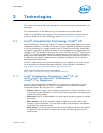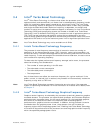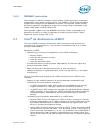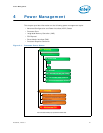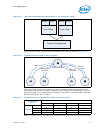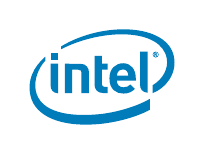
Technologies
46 Datasheet, Volume 1
• More efficient MSR interface to access APIC registers.
— To enhance inter-processor and self directed interrupt delivery as well as the
ability to virtualize the local APIC, the APIC register set can be accessed only
through MSR based interfaces in the x2APIC mode. The Memory Mapped IO
(MMIO) interface used by xAPIC is not supported in the x2APIC mode.
• The semantics for accessing APIC registers have been revised to simplify the
programming of frequently-used APIC registers by system software. Specifically
the software semantics for using the Interrupt Command Register (ICR) and End Of
Interrupt (EOI) registers have been modified to allow for more efficient delivery
and dispatching of interrupts.
The x2APIC extensions are made available to system software by enabling the local
x2APIC unit in the “x2APIC” mode. To benefit from x2APIC capabilities, a new operating
system and a new BIOS are both needed, with special support for the x2APIC mode.
The x2APIC architecture provides backward compatibility to the xAPIC architecture and
forward extendibility for future Intel platform innovations.
Note: Intel x2APIC technology may not be available on all SKUs.
For more information, refer to the Intel 64 Architecture x2APIC specification at
http://www.intel.com/products/processor/manuals/
3.8 Supervisor Mode Execution Protection (SMEP)
The processor introduces a new mechanism that provides next level of system
protection by blocking malicious software attacks from user mode code when the
system is running in the highest privilege level.
This technology helps to protect from virus attacks and unwanted code to harm the
system.
For more information, please refer to the Intel
®
64 and IA-32 Architectures Software
Developer’s Manual, Volume 3A (see Section 1.8, “Related Documents” on page 22).
3.9 Power Aware Interrupt Routing (PAIR)
The processor added enhanced power-performance technology which routes interrupts
to threads or cores based on their sleep states. For example concerning energy
savings, it routes the interrupt to the active cores without waking the deep idle cores.
For Performance, it routes the interrupt to the idle (C1) cores without interrupting the
already heavily loaded cores. This enhancement is mostly beneficial for high interrupt
scenarios like Gigabit LAN, WLAN peripherals, and so on.
§ §




